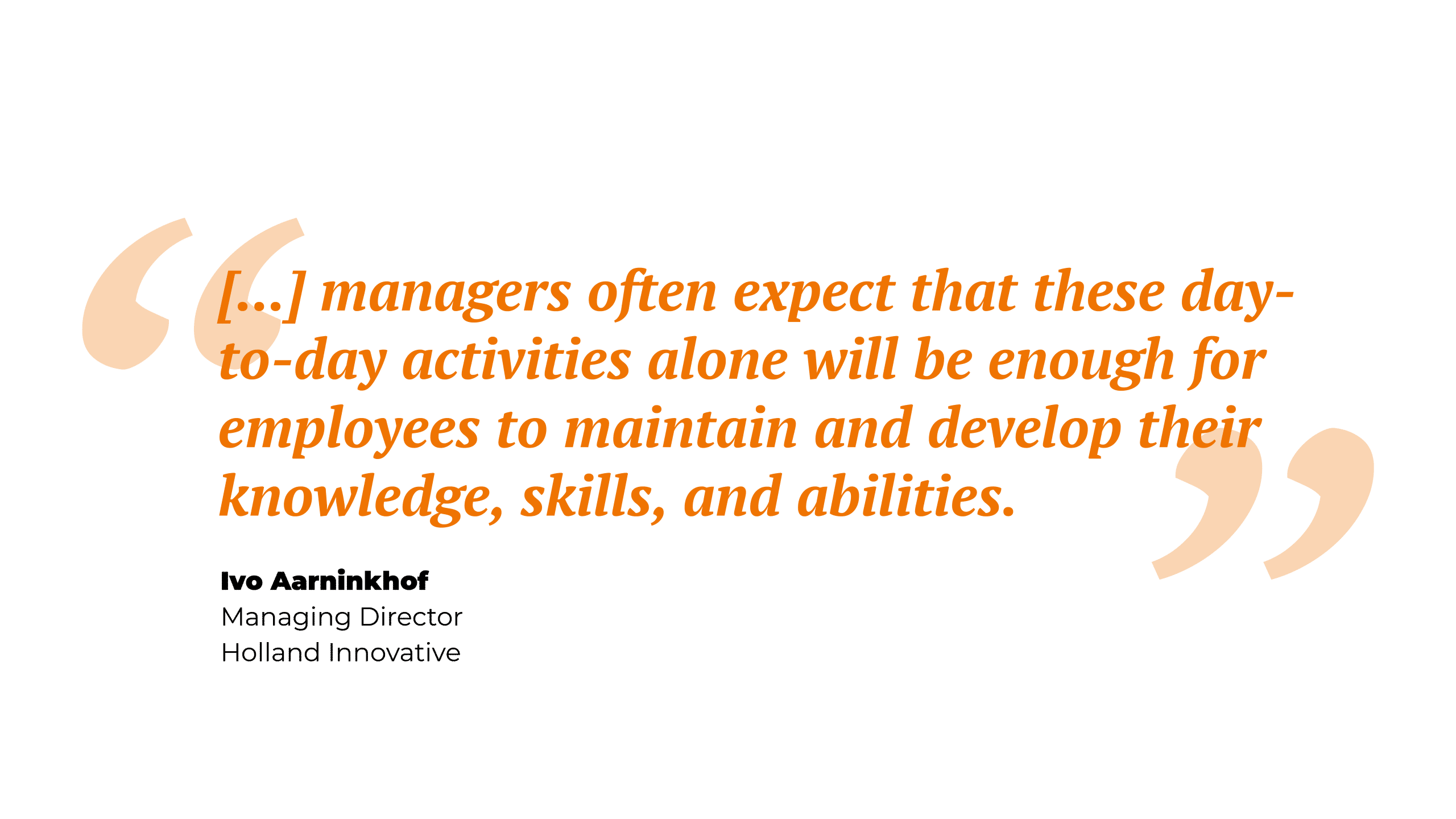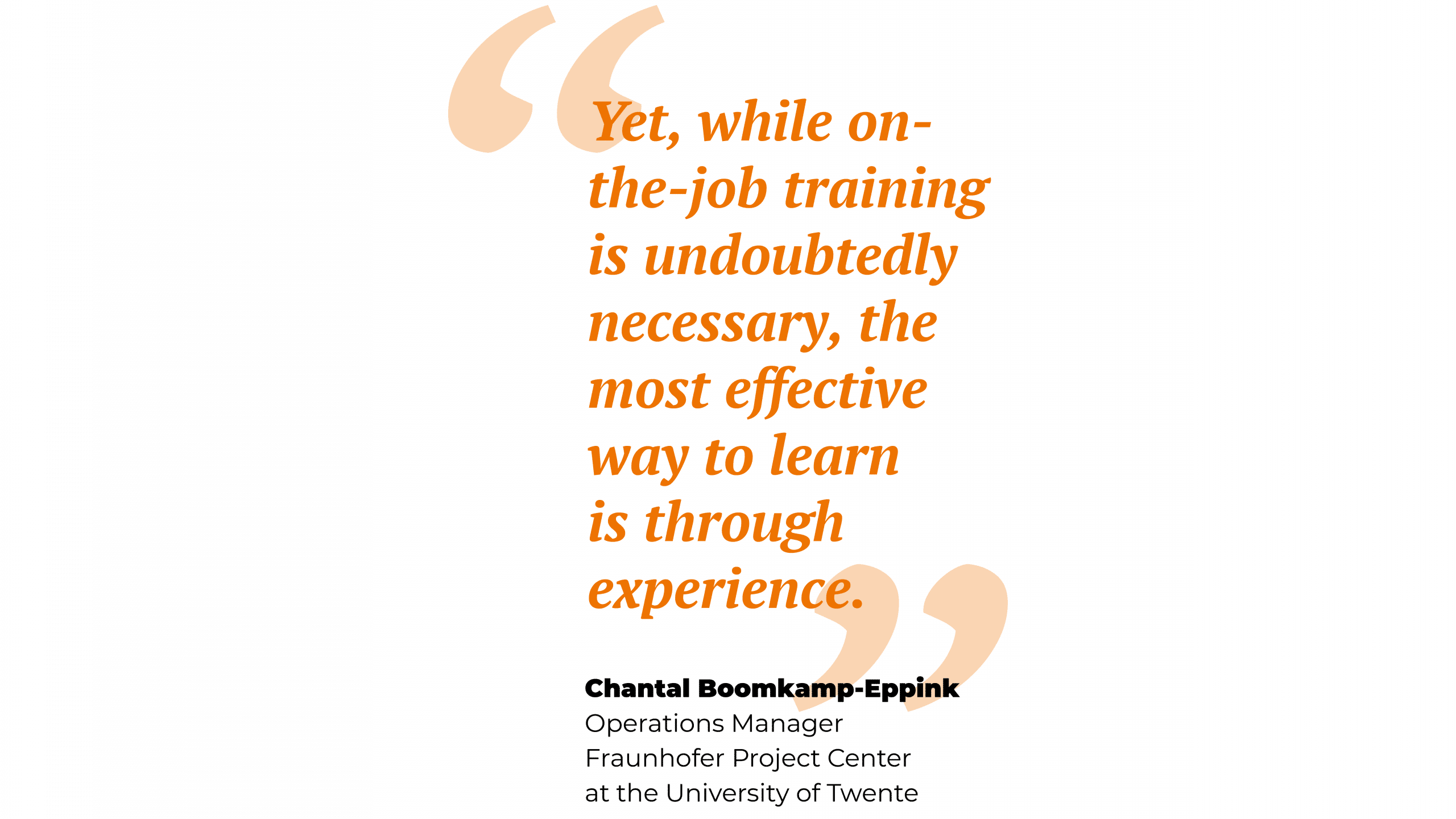Grow Your Business by developing your workforce

Few sectors of the global economy embody the fourth industrial revolution’s ideals and challenges more than manufacturing. In such a rapidly evolving industry, powered by advanced technology and digitisation, HR teams face rising pressure to develop their workforces while facing often enormous financial and employment challenges.
Constant change in the manufacturing sector places a significant burden on managers, who need to ensure their workforces are always ready to adapt. For example, workers on the shop floor must be prepared to deploy new technologies, such as internet of things (IoT) and industrial robotics powered by AI and machine learning.
These challenges demand the constant nurturing of existing workforces from initial onboarding through skills development, ongoing training, and career pathfinding. HR teams must, therefore work closely with every department and employee to drive a culture of continuous learning whilst maximising employee engagement, productivity, and satisfaction.
The real cost of employee turnover
The workforce is an organisation’s most valuable asset, no matter how junior it is. Yet, staff may walk out the door any day in search of new opportunities. Financial compensation is not the only motivation for employees to leave a company, however. Other key drivers of employee turnover include career development, satisfaction in the workplace, and whether one’s values align with those of the company.

Employee turnover costs are hard to quantify universally since they vary widely by sector and position. That said, research suggests it typically costs between six and nine months of an employee’s salary to replace them. For higher earners, such as executive-level employees and highly specialised positions, the cost of turnover can be much higher. In the manufacturing sector, which often relies heavily on proprietary systems and machinery, requiring highly specialised workforces, the cost of employee turnover can be enormous.
While a degree of employee turnover is expected, managers should have a clear idea of how much it costs to replace employees, if only to recognise the importance of developing their existing workforces. Aside from the obvious costs associated with employee turnover, such as hiring and onboarding, there are also those that are hard to quantify, but can have an even greater impact on business growth and sustainability. Among the most significant is the cost of lost productivity. For example, it takes an average of eight months for a new employee to reach peak productivity, and then there is the lost engagement and cultural and reputational impact to consider.
The importance of manager engagement
Just as capital investments in assets like machinery demand regular upkeep, so too does the workforce. To continue operating at peak productivity, as well as adapt to constant changes in the manufacturing environment, employees need ongoing skills development and training. However, these factors often get overlooked after the initial onboarding phases as day-to-day activities take precedence.
At the same time, managers often expect that these day-to-day activities alone will be enough for employees to maintain and develop their knowledge, skills, and abilities.
Manager engagement is by far the top enabler of a successful talent marketplace. Without a strong employee engagement strategy, employees are more likely to view their workplaces negatively or just do the bare minimum to get through the day. According to Gallup’s State of the Global Workplace survey, 85% of employees fall into this category. In other words, employees have no emotional attachment to the companies they work for, which has a knock-on effect on everything from productivity to loyalty to customer satisfaction. After all, you cannot expect to grow your customer base if you are not developing your workforce.
Realising the need for employee engagement in growing their customer base, managers often focus their efforts on customer-facing staff. However, this singular focus also misses the point that a good customer experience depends on employee engagement levels across the board. For example, if there is a lack of employee engagement with workforces on the shop floor, it may result in reduced product quality and longer cycle times. Employee engagement strategies must therefore be applied throughout the organisation.
Engaged managers who lead by example create more engaged employees, and there is far more to leading than just paying attention to what looks good on paper. The development of any workforce must start with a top-down approach. Those at the executive level should perpetuate a culture of engagement and learning through an optimal blend of skills development, training, ongoing communication and feedback.
Seminars and workshops are not enough
To future-proof their workforces, managers must provide the time and space necessary for people to learn through experience. Traditionally, they would rely on methods like seminars and workshops and simple directives like having experienced employees watch what others are doing. Yet, while on-the-job training is undoubtedly necessary, the most effective way to learn is through experience. The reality of the situation is that managers often rely on on-the-job training because they do not have a proper employee training and skills development program.
On-the-job training is valuable during onboarding, but managers should not rely on it entirely. Moreover, single events like training seminars and workshops do little to drive a continuous improvement culture alone. Whether on the shop floor or in the back office, employees must continuously adapt to new demands and situations. This requires regular engagement and teamwork, whereby employees have multiple options to learn and develop their knowledge, skills, and abilities. In other words, employees must be in a position where they can easily align their own professional goals with the company’s long-term vision.

How can HR teams maintain their workforces?
Managers often fear that providing comprehensive training will encourage employees to seek better opportunities elsewhere. The reality is that driving a corporate culture of learning makes organisations stronger, more adaptable, and less prone to risk.
Loyal employees are those who believe in the company’s mission, and whose personal values align with the corporate vision. These are the employees who see a future in the companies they work for, both in terms of the organisation’s impact on the community it serves and their long-term professional goals. If employees can see opportunities for professional growth, they will reach a much higher level of morale and productivity than would otherwise be possible.
An organisation’s ability to address the widening skills gap, especially in as dynamic a sector as manufacturing, is critical for ensuring future growth. Relying entirely on the recruitment of new employees is simply not going to be viable. Furthermore, the rapid transformation of the shop floor is creating new roles and changing existing ones. Thus, employers must focus on creating a culture of innovation and continuous learning through a program that incorporates ongoing training, skills development, and career pathing.
Ongoing training
Training typically starts during the onboarding phase, but then it often ends up getting forgotten about after some months as new hires settle into their primary roles. But, given the constantly changing environments in manufacturing, as well as virtually every other sector, the need for ongoing training is clearer than ever. Training programs must be ongoing, yet must also allow enough flexibility to accommodate a wide range of learning styles and adapt to new conditions.
Seminars and workshops still have a place in any comprehensive training program, but they should never be the only options on offer. Companies should assess innovative learning tools, such as online training and virtual labs. This will allow them to learn both on and off the clock to develop their knowledge not only for their job roles, but also for their own professional goals. Training should also align with skills development and career pathing.
Skills development
While training programs help develop an employee’s knowledge and skills in line with their job requirements, skills development takes things further by learning through doing. There is also some crossover between the two. For example, many online learning platforms provide hands-on virtual labs that allow employees to put their knowledge and skills to the test in a more practical way.
Managers should encourage skills development throughout an employee’s tenure, with a view to giving them the opportunity to validate their skills through experience. Skills development is also a vital part of the certification process, in cases where an employee must earn a specific certification to fulfil certain regulated roles.
Career pathing
A proven way to motivate employees to stay with the company is to give them opportunities to develop and progress professionally within the organisation. After all, not many people want to be stuck in the same job for their entire working lives. If they see an opportunity to advance their careers (and their financial goals) within a particular company, then chances are they will be far more willing to do that than go through the rigmarole of looking for a new job with a new employer.
Career pathing encompasses various forms of career progression, such as career ladders. That said, it is a good idea to allow for some flexibility to allow employees to progress into the areas they end up being most accomplished in. In other words, there should be an opportunity for them to change course later on. This is especially important given the need for organisation-wide culture change, multigenerational workforces with different goals and needs, and the growing talent crunch in many key areas.
Final words
Employees are a company’s most valuable asset, so it makes sense to invest heavily in human resources. By demonstrating a strong commitment to learning and professional progression, organisations can reduce their own costs and drive growth while maximising the satisfaction and wellbeing of their employees. In these highly uncertain times, such goals have never been more important.